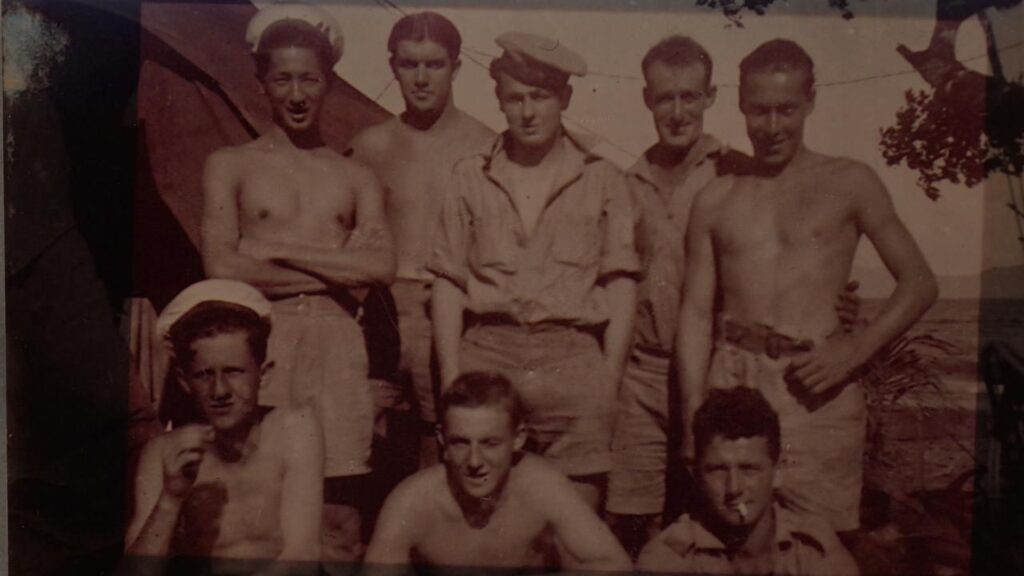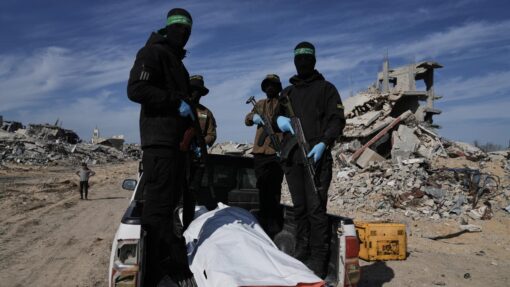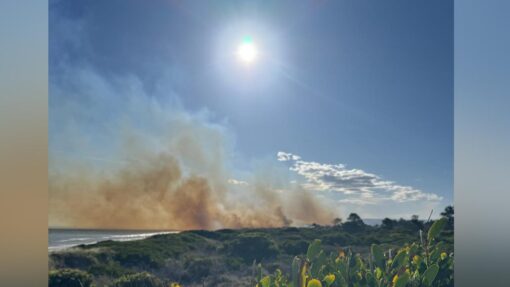Tales of the jungle: how WWII’s eyes and ears endured
William Ton |

Deep in the dense, overgrown jungles of New Guinea, the eyes and ears of World War II Allied soldiers faced a greater danger than the Japanese warplanes that flew overhead.
It rained most days and poured almost every night, turning the perpetually soaked ground into muddy swamps as oppressive temperatures hung heavy in the air of the Australian-administered territory.
Olive-green canvas propped up by wooden poles hardly shielded those on the backline of the war from the unbearable conditions.

Yet the watchers of the seas and skies never wavered.
There were no roads, and you couldn’t walk far from campgrounds that were perched on elevated hills without stepping into creeks or shrubland.
It was a “malarial pest hole” where mosquitoes and insects thrived and diseases were rife.
For Ron Gee Kee, a coder freshly deployed to Milne Bay on the southern point of the island’s east, it was the “worst place in the world”.
The Pacific theatre of the Second World War opened in 1941 between Japan and the allies, with campaigns fought in east and southeast Asia and the Pacific Ocean.
After Japanese bombs had devastated parts of Darwin and where he lived in north Queensland, an 18-year-old Mr Gee Kee enlisted in 1943.
“Would you run away and hide in the bush, or would you join up?” he said of his decision.

Every night as dusk fell on the humid grounds of Milne Bay, air sirens would sound, piercing the sky with drawn-out wails, alerting to enemy planes approaching.
“You could hear the planes coming, but you couldn’t see them because the sun was always behind them,” Mr Gee Kee said.
He and his team would shelter in their huts as half a dozen Japanese fighters shot past their base on the side of a hill, locked onto the coconut trees below.
But they didn’t concern the non-combat servicemen too much after Allied forces led by Australian soldiers had decisively repelled the Japanese invaders in the battle of Milne Bay in 1942.
By early 1943, about 7752 Australian and American soldiers had died in battle in New Guinea.
That was dwarfed by the casualties from tropical diseases, numbering 37,360, including 27,892 cases of malaria.
“A couple of my mates died from malaria, and if they hadn’t, they had dysentery and big sores on their bodies,” Mr Gee Kee said.
“Most of the time we didn’t wear shirts, we just wore shorts because it was so hot and wet up there.”

Air force radar operator John Patrick McAuley had already narrowly dodged death after a bout of Dengue fever while based in Townsville.
By the time he was deployed to Merauke in Dutch-controlled New Guinea, now West Papua, his skin was a yellowish hue due to the tablets fed to servicemen to inoculate them from tropical diseases.
Merauke had been left in ruins from a Japanese bombing when he arrived in 1943.
“It’s not a pleasant place for people to live. It’s not suitable,” Mr McAuley said.
“It was hot all the time. An older person would find it impossible, I’m sure, but we had youth on our side.”
Growing up in Broken Hill, a scrawny Mr McAuley never got to meet his father, who died when he was 15 months, so he followed in the footsteps of a “cluey” friend into radar defence.
“I wanted to do my share of saving Australia from the Japanese, who were already advancing down. No way were they going to come and take over,” he said.
On the ground, work was never-ending.
Mr Gee Kee had the top-secret responsibility of sending and translating messages sent by cryptic codes to arm the Allied forces with intelligence on ships in the Pacific.

Mr McAuley would sit in front of radar sets and twiddle with control knobs before relaying information on the skies back to headquarters in Bankstown in Sydney.
Despite constant contact with headquarters, letters to and from family and friends arrived with splotches of black ink censoring information, and the lack of access to newspapers meant they were effectively shut off from the world.
“We were young. We did what we were told … we were happy with that,” Mr McAuley said.
After 12 months at Milne Bay and a short stint in Madang on the north coast, Mr Gee Kee returned to the Brisbane office of American General Douglas MacArthur, who led the Allies’ response in the Pacific theatre.
He contracted malaria but recovered in a Brisbane hospital, unlike many of his mates in the field hospitals of New Guinea.
His final deployment took him to an old bank building in Darwin in 1945, which had remained a scene of destruction from Japanese bombings years earlier.
It was there on August 15, 1945, that the message came through.
On August 6, 1945, American bomber Enola Gay dropped the ‘Little Boy’ atomic bomb on Hiroshima. By the end of the day, 45,000 people were dead.
Three days later, another atomic bomb fell about 400km away in the Japanese city of Nagasaki, killing 22,000 almost immediately.
US President Harry S. Truman justified the twin bombings as a means to an end to ongoing suffering.
The gamble, which stole hundreds of thousands of civilian lives, paid off when Japanese Emperor Hirohito announced his nation’s surrender days later.

The news came quickly, spilling through the Darwin outpost with cheers and screams.
The jubilation soon morphed into a rush of people wanting to return to their old lives.
“We were trying to get discharged as quickly as possible and go find some work. We didn’t want to stay in the service any longer,” Mr Gee Kee said.
Discharged in 1945, Mr McAuley went on to marry the love of his life, Margaret, earn a degree in economics and continue serving the nation across high-profile roles in the finance industry.
Eighty years on, age has finally wearied Australia’s protectors.
Memories are slowly fading, as is the number of veterans left to tell the story.
For 101-year-old Mr McAuley, the events at the end of the war are fleeting.
“That’s a pivotal date in your calendar, but one day was the same as another, and we didn’t know anything about the atomic bomb,” he said.
Fewer than 1300 WWII veterans are alive today from the almost one million Australians who served during the war.
The youngest surviving veteran is 95, while the oldest is 108.

There’s a greater sense of relevance and urgency as the nation prepares to commemorate the 80th anniversary of victory in the Pacific.
“The legacies and consequences of the Second World War remain with us still,” the Australian War Memorial head of military history Karl James said.
“The greatest tribute we can pay to those Australians who fought the Second World War is to not forget their service and sacrifice.”
RSL president Greg Melick said the anniversary was important as the number of WWII veterans diminished.
“If not for their sacrifices and those of our allied service men and women, our lives today would be significantly different,” Mr Melick said.
Nowadays, the 101-year-old Mr Gee Kee lives a quiet life in Sydney with his wife Betty, whom he married right after the war.
While 80 years on, Mr McAuley remains an idealist, advocating for a lasting peace in the world.
“I’m a survivor, and I have that responsibility to my friends, my mates and to past generations,” he said.
RSL NSW will hold a Victory in the Pacific commemoration service at the Cenotaph at Martin Place in the Sydney CBD on Friday.
Other ceremonies will be held at the Shrine of Remembrance in Melbourne, Canberra’s Australian War Memorial, and the State War Memorial in Perth.
Lifeline 13 11 14
Open Arms 1800 011 046
AAP


